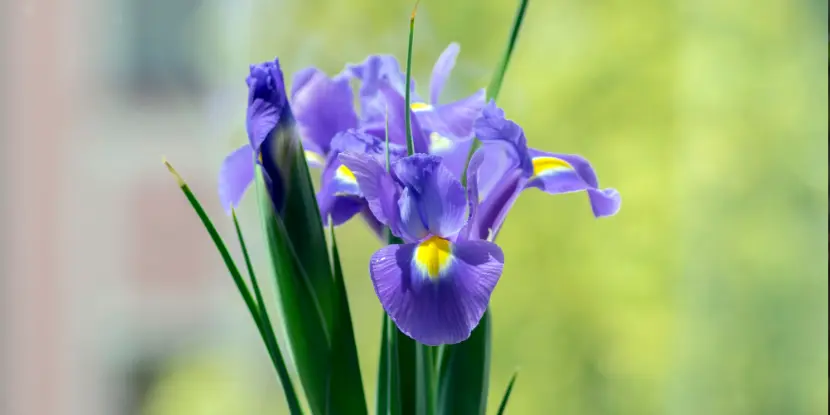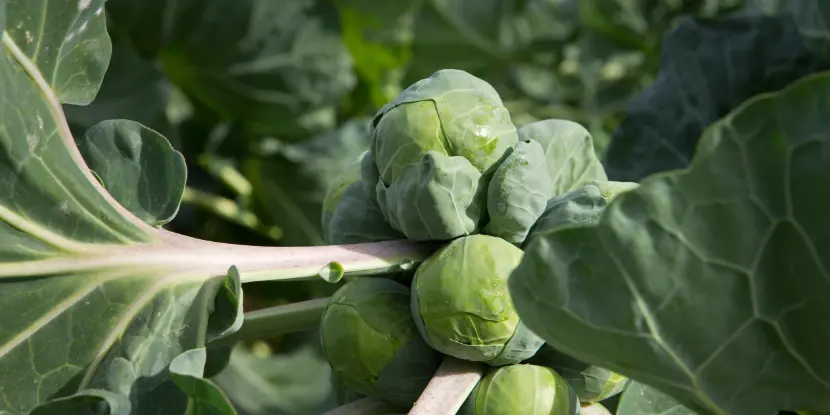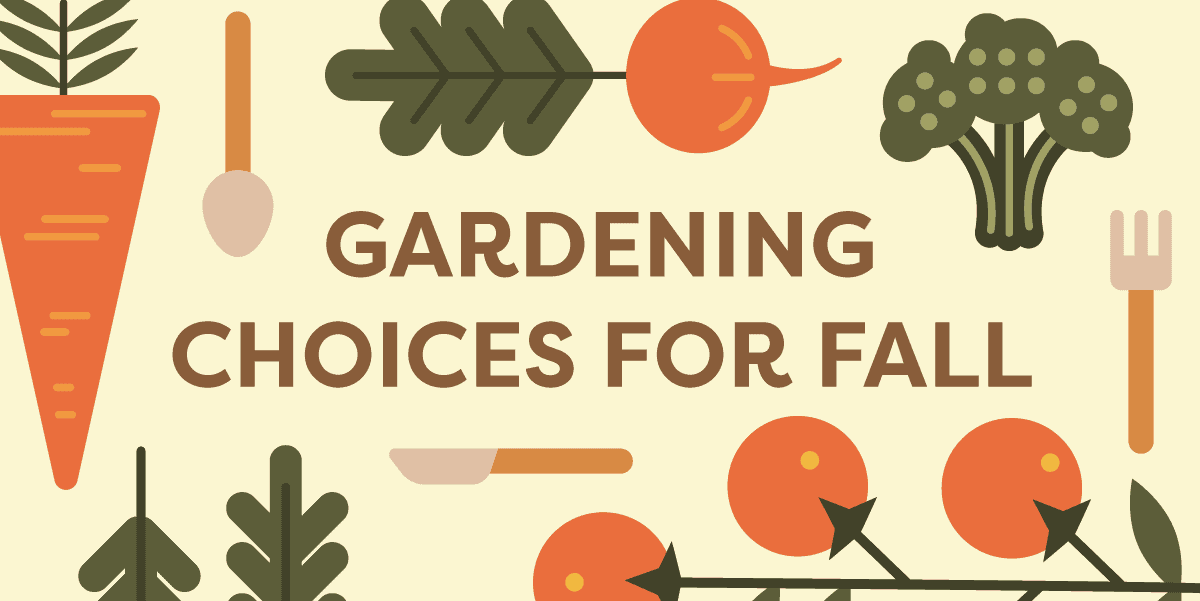There are many good fall choices for gardeners in Southern California, although the temperature, moisture or the lack thereof, wind, and soil may be challenging.
Flower colors and vegetable flavor are better for fall crops because of cooler temperatures during maturity compared to summer crops. This is why summer flowers in the North are so colorful.
November is a suitable time to plant many flowers: spring-flowering bulbs, clematis, honeysuckle, Dutch iris, larkspur, lily of the valley, petunia, phlox, pinks, salvia, scabiosa, sweet peas, trumpet creeper, sweet William, wisteria, and more.

A Dutch iris bloom.
November should be suitable to start a late crop by sowing carrot, Swiss chard, kale, kohlrabi, lettuce, mustard, English pea, radish, spinach, and turnip seeds.
Also, broccoli, Brussels sprouts, and American cabbage plants can be transplanted. We started harvesting cucumbers, green beans, sweet peppers, and squash from our fall crops about a month ago. Earlier this week, we started picking sweet corn. Our six fall tomato plants are loaded with green fruit.

Brussels sprouts on the stalk.
Those crops were planted late in August. It was rather hot and dry to start them earlier. Since it seemed so late, I measured the rows and counted and soaked the seeds for one day. The planting dates for most crops can vary up to a month or two.
Tomatoes at least one-half of mature size will be picked and stored in shallow cardboard boxes before a freeze. I’ll place them individually, only one layer deep, and stack them in the garage to ripen.
The ripe ones will go to the kitchen each week, and the spoiled ones will go to the compost. In the past, some tomatoes stored during November ripened as late as March. A more natural method is to dig up the plants and hang them upside down, but the roots are dirty, and the leaves drop later. You’ll have a mess to clean up.
Southern California is an excellent fall gardening area for many crops. It sure does beat a possible snowbank from September to April.
Gardening Choices for Summer Crops
Some gardeners think spring-summer flower and vegetable crops are best for their family. Old plants should be removed and composted, and the soil should be tilled before the holiday season.
That should reduce some insects and allow the soil to settle before early planting. Then November and December are available for other projects.
The gardener who grew the world’s largest tomato (7 lbs, 12 oz) prepared the planting site during the fall.
My master gardener committee decided to plant Elbon rye and Austrian winter peas during September in their Extension Demonstration Garden. This method should reduce nematodes, increase the organic matter, and increase fertility.
Then November and December became available for other projects. The cover crop had to be tilled into the soil several weeks before planting.
FAQs: Fall Gardening in Southern California
Q: What are the best vegetables to plant in during the fall?
Some of the best vegetables for fall planting include leafy greens like kale, spinach, and lettuce, root vegetables like carrots, beets, and radishes, and members of the cabbage family like broccoli, cauliflower, and Brussels sprouts.
Q: Can I plant herbs in my garden during the fall?
Many herbs thrive during the cooler fall months. Consider planting cilantro, parsley, dill, and chives, which grow well in the autumn weather.
Q: What’s the optimal planting time for fall crops in California?
The best time is from late August to early October. This allows the plants to establish themselves before the first frost.
Q: How much water do fall garden plants need?
Fall garden plants typically require less water than summer crops. However, to ensure healthy growth, it’s important to monitor soil moisture and provide consistent watering, especially during dry spells.
Q: What soil conditions are best for fall gardening?
Well-drained soil enriched with organic matter like compost is ideal. Ensure the soil is loose and not compacted to allow roots to grow deep and access nutrients efficiently.
Q: How can I protect my fall garden from pests and diseases?
Use row covers to ward off pests. Regular monitoring and removal of infested plants can minimize disease spread. Also, practicing crop rotation and maintaining good garden hygiene can help.
Q: When can I expect to harvest my fall-planted vegetables?
Harvest times vary depending on the crop. Leafy greens may be ready in as little as 30–45 days, while root vegetables might take 60–75 days.
Q: Can I use cover crops in my fall garden?
Yes, you can plant cover crops like clover, rye, and vetch to improve soil health, prevent erosion, and suppress weeds.
Q: How do I prepare my garden for fall planting?
Begin by clearing out any remaining summer crops and weeds. Amend the soil with compost or organic matter to improve fertility. Plan your garden layout to ensure adequate spacing for each crop.
Q: What are the benefits of fall gardening in California?
Fall gardening allows for extended harvest periods, improved soil conditions due to cooler weather, and generally fewer pest problems compared to summer gardening.
Q: Is it possible to grow flowers in a fall garden?
Yes, many flowers thrive in fall conditions. Consider planting pansies, violas, calendula, and snapdragons, which all perform well in cooler weather.
Q: How can I extend the growing season of my fall garden?
Cold frames, cloches, or row covers can extend the growing season by protecting plants from early frosts. These methods help keep temperatures consistent and shield plants from extreme weather conditions.

